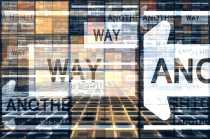More complexity, more web instead of network and fewer and fewer market players, all this has changed the internet. Can technical standardization do anything about it?
Table of Contents
“The Internet Engineering Task Force (IETF) is not a traditional standards organization, although it produces many standards,” wrote Gary Scott Malkin in a 1993 document he titled “The Tao of the IETF.” Almost three decades later, the IETF is now debating whether this policy document is obsolete—a historical relic. Is the debate also an expression of a culture change in the standardization organization for the Internet?
“Missing Link”

What is missing: In the fast-paced world of technology, there is often the time to re-sort all the news and background information. At the weekend we want to take it, follow the side paths away from the current, try different perspectives and make nuances audible.
-
More on the features section “Missing Link”
“Since all participants (at IETF conferences, ed.) have to wear name tags, they also have to wear shirts or blouses. Pants or skirts are also strongly recommended. Seriously, newcomers are always embarrassed when they wear a suit on Monday morning Show up to find that everyone else here is wearing t-shirts, jeans (shorts, weather permitting) and sandals.”
importance of work
It is formulations like this that have made the IETF’s Tao well-known and the organization notorious for its somewhat idiosyncratic philosophy. The Tao document was written, as author Malkin explains in RFC 1392 of January 1993, because in the 1990s nearly forty percent of newcomers arrived at each of the three-times annual meetings of TCP/IP standardizers. In the Tao, in the original bible of Taoism and interpreted by some translators as a subtle political criticism of the prevailing Confucianism, in the case of the IETF the newcomers were given an understanding of the ways and means of the IETF process.
There is talk of the openness of the standardization process; as an individual developer, anyone can propose their technical solutions for “urgent problems for the operation and technology of the Internet”. The importance of working via public mailing lists – long before Corona travel restrictions – is underlined; also the note that it is a bad idea to use mailing lists or meetings to promote one’s company is included: “the IETF is not a trade show”.
Accelerated IETF update cycles
By the year 2000, the IETF had grown to an impressive 3,000 participants. The philosophy and processes grew with it and continued to grow even after the dot-com bubble burst. The short 18-page document, which emulates the Taoist model, has become 50 pages and many a funny reference to the striptease by the notorious suit wearer Vint Cerf for the 20th birthday of the IETF has long since been cleaned up.
The roles of the IETF committees have shifted, such as the relationship between the Internet Architecture Board and the Internet Engineering Steering Committee, and chapters on the relationship between the IETF and the “outside world” have also been added. Even the press was treated to a how-to section and warned not to arrive at the IETF hungry for sensation. Finally, cultural techniques such as humming were also added. This “buzz” is used by participants in IETF working groups to express the level of like or dislike of a technical proposal. It is a measure of the “rough consensus” that everyone can live with.
Nevertheless, the Tao is now on the collar. At the IETF’s most recent meeting in Philadelphia, current IETF chairman Lars Eggert asked what to do with the unwieldy document in the future. Updated versions of the IETF Bible no longer go through the regular peer review process. Rather, a small editorial team updates the changes to the IETF structure more or less regularly on a dedicated website.
But even that can’t be kept up, which of course also illustrates how much the IETF has changed structurally in recent years – it now has its own legal umbrella, a company with limited liability, the IETF Administration LLC. The IETF has become serious.
In addition, Eggert complains, it is quite confusing that the old Request for Comment documents, from the original RFC 1931 to RFC 4677, continue to exist alongside the updates that have now been published on the website.














